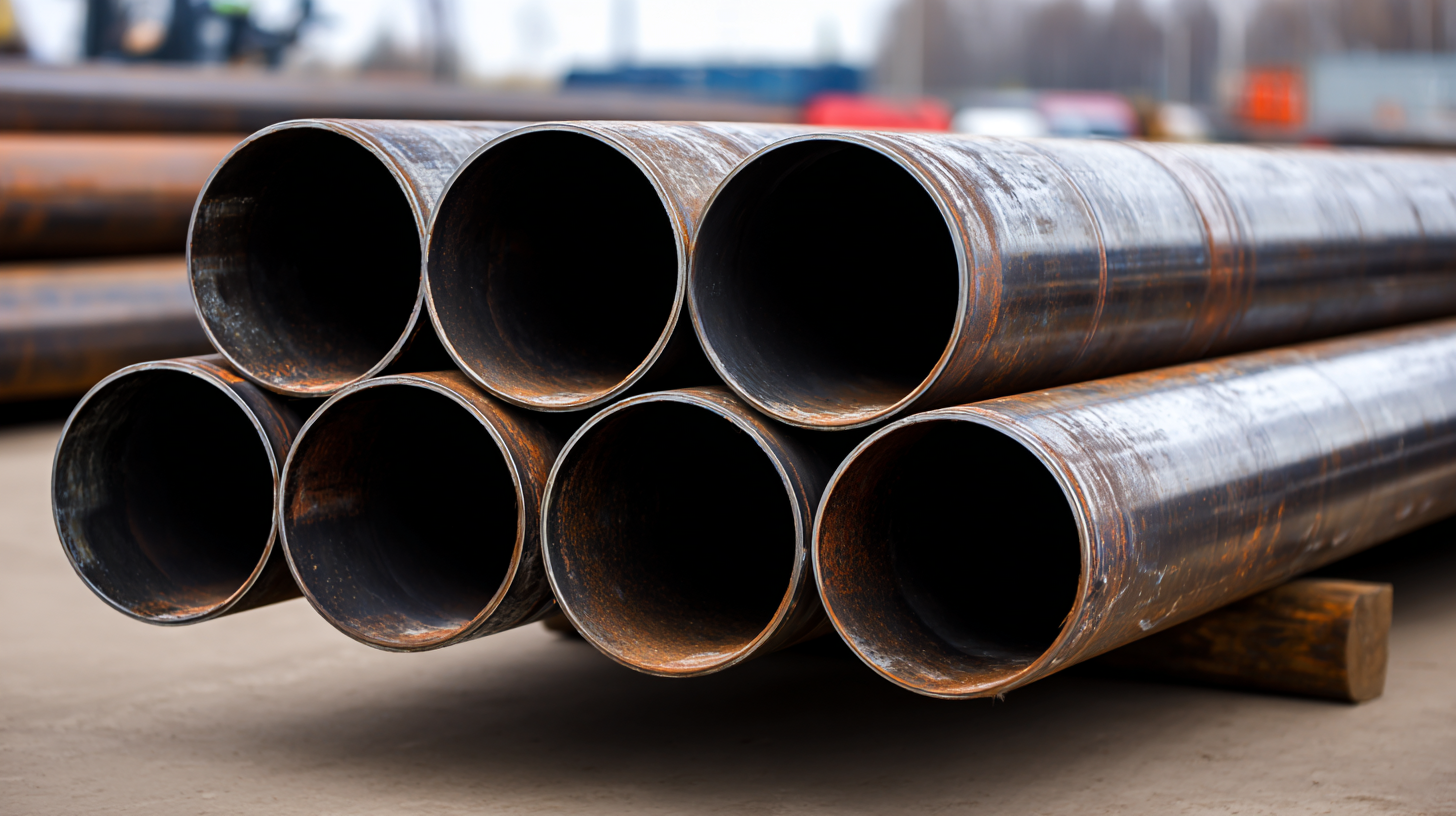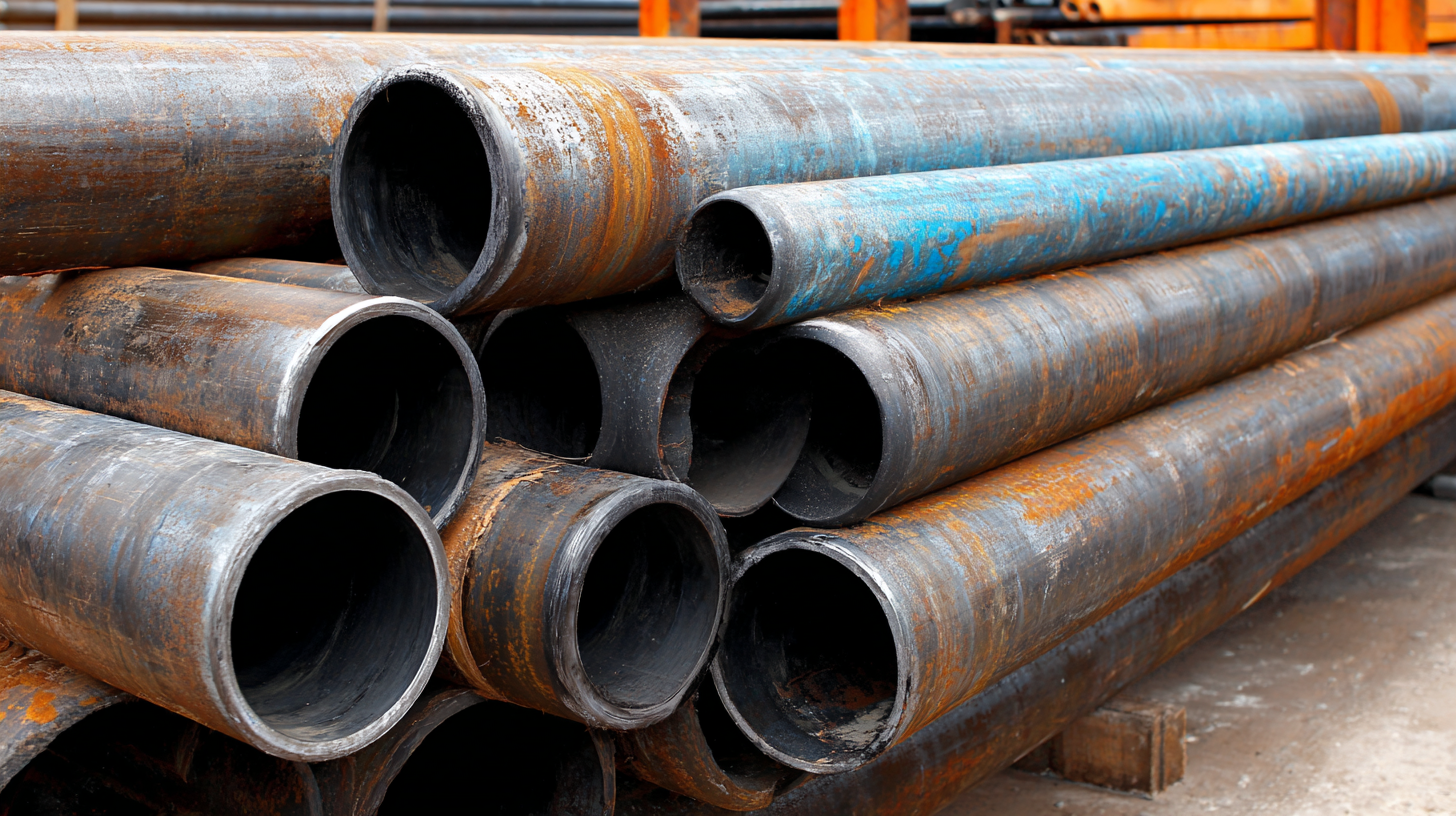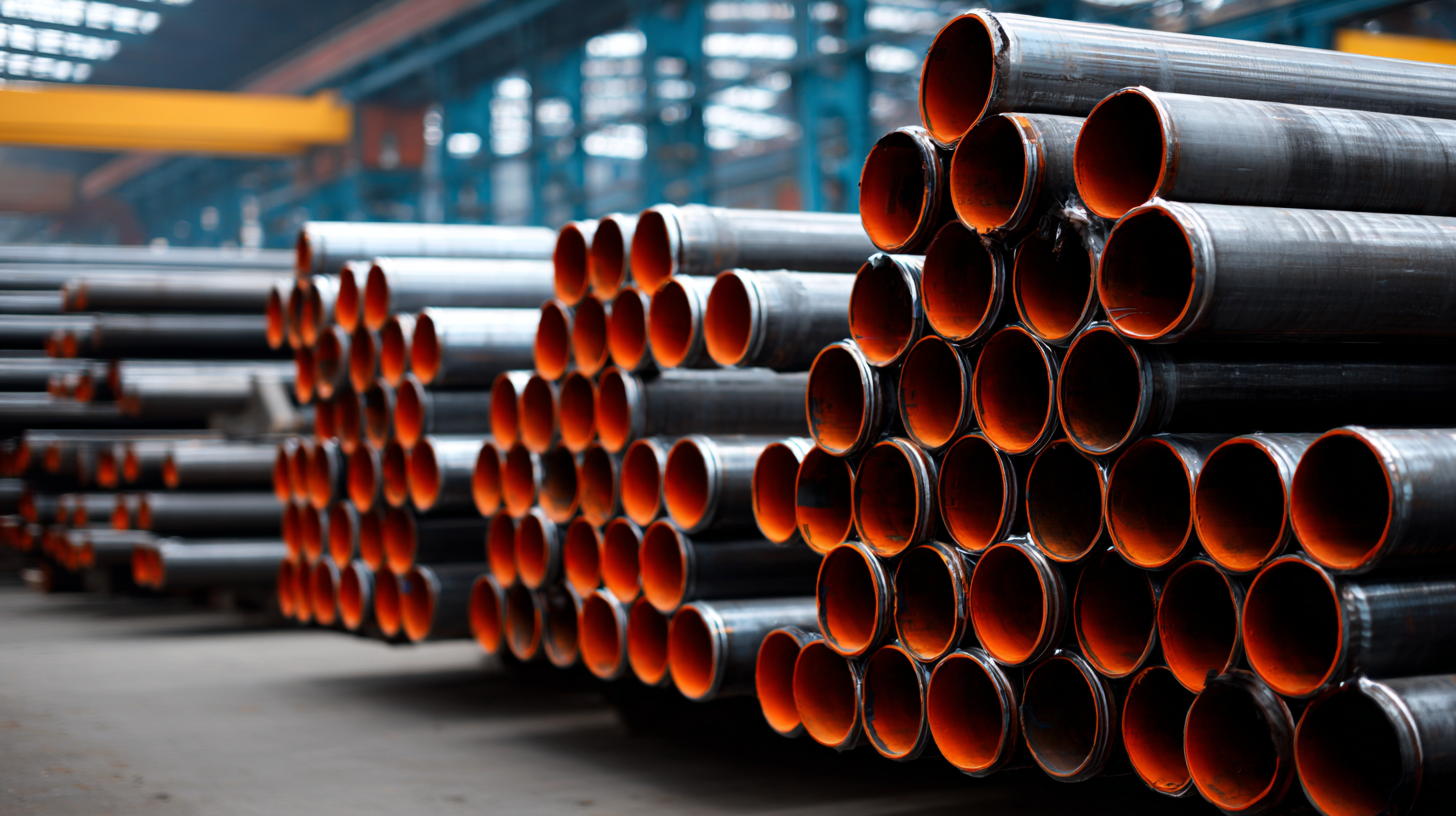In the realm of industrial construction and infrastructure, the selection of materials plays a pivotal role in ensuring safety, durability, and cost-effectiveness. Among the crucial choices, "Seamless Pipe" stands out as a preferred option, widely recognized for its strength and reliability. According to a report by the Global Seamless Pipe Market, the demand for seamless pipes is expected to grow at a CAGR of 5.2% through the next decade, driven by their superior performance in high-pressure applications. Seamless pipes provide a uniform structure and eliminate the weaknesses associated with welding, making them ideal for industries such as oil and gas, power generation, and chemical processing. As projects become increasingly complex, selecting the right seamless pipe requires a systematic approach and an understanding of various factors, including material specifications, environmental considerations, and regulatory compliance. This checklist aims to guide project managers and engineers in making informed decisions to optimize their project outcomes.

When selecting the best seamless pipe for industrial applications, understanding the key factors influencing your choice is essential. The material, such as stainless steel or ductile iron, plays a critical role.
Stainless steel seamless pipes, for example, are projected to reach a market value of USD 5.15 billion by 2030, indicating a growing demand primarily due to their corrosion resistance and suitability in various industrial environments.
Factors such as pipe diameter, wall thickness, and pressure rating should also be considered, as these attributes affect the pipe's overall performance in specific applications.
Another crucial element is the manufacturing process of the pipes. High-quality production techniques ensure that the seamless pipes maintain their integrity under stress and in challenging conditions.
For instance, a detailed report on ductile iron pipe manufacturing emphasizes the importance of understanding setup costs, machinery, and raw materials needed for a successful manufacturing plant.
This insight can guide businesses in making informed decisions about their pipe procurement and manufacturing processes, ultimately enhancing operational efficiency and product quality.
The selection of seamless pipes for any project is pivotal, with international standards and certifications playing a crucial role in ensuring quality and reliability. According to industry reports, the global market for seamless pipes is projected to witness substantial growth, driven by increasing demand in energy transportation and construction. As of 2025, the market is estimated to reach approximately $38.121 billion, with a compound annual growth rate of 7.4% until 2032. This growth is underpinned by the need for high-precision materials in various sectors.
Understanding international certifications is essential when choosing seamless pipes. These standards ensure that the pipes meet specific quality, safety, and performance criteria. Notably, certifications from reputable organizations guarantee compliance with global manufacturing benchmarks. Recent developments highlight that certain producers have successfully achieved certification from major oil corporations, allowing them to tap into significant international markets. Such credentials not only bolster the credibility of the manufacturers but also ensure that construction projects benefit from durable and efficient materials, which are crucial in today’s competitive landscape.
| Dimension | Material | Standard | Certification | Application |
|---|---|---|---|---|
| 2" Sch 40 | Carbon Steel | ASTM A106 | API 5L | Oil and Gas |
| 3" Sch 40 | Alloy Steel | ASTM A335 | ISO 9001 | Power Plants |
| 4" Sch 80 | Stainless Steel | ASTM A312 | PED | Chemical Processing |
| 6" Sch 40 | Carbon Steel | ASTM A53 | NACE MR0175 | Construction |
| 8" Sch 40 | Alloy Steel | ASTM A335 | ISO 14001 | Mining |
When it comes to selecting the right piping for your project, understanding the performance metrics of seamless versus welded pipes is crucial. Seamless pipes, manufactured without joints or welds, exhibit superior mechanical properties, including enhanced strength and resistance to corrosion. These qualities make them particularly suitable for high-pressure applications, such as oil and gas industries, where the risk of leaks can lead to catastrophic failures. The absence of weld seams minimizes weak points, ensuring a more reliable and durable piping system.

On the other hand, welded pipes offer distinct advantages in terms of cost-effectiveness and availability. They are produced by joining two or more sections together, allowing for flexible design and easier installation. However, welded pipes can be prone to weaknesses at the seams, and their performance can be influenced by the welding process. Consequently, it is vital to consider the specific requirements of your project—such as pressure ratings, fluid type, and environmental conditions—when evaluating the trade-offs between seamless and welded pipes. This comparative analysis can guide you in making an informed decision that aligns with your project’s performance criteria.
When selecting the best seamless pipe for your project, assessing
material specifications and properties is crucial for ensuring
optimal durability. Seamless pipes are often made from various materials, including stainless steel,
carbon steel, and alloyed metals, each offering unique
advantages depending on the specific demands of your application. For instance, stainless steel pipes
are renowned for their corrosion resistance, making them ideal for environments
exposed to harsh chemicals, while carbon steel pipes are favored for their strength and
cost-effectiveness in structural applications.
In addition to material type, it’s essential to evaluate mechanical properties such
as tensile strength, yield strength, and impact resistance. These characteristics help determine how well the pipe will
withstand operational stresses, temperature changes, and potential environmental factors. Furthermore, consider the
manufacturing process, as this can significantly influence the overall quality
and reliability of seamless pipes. Understanding these specifications allows project managers and engineers to make
informed decisions, ultimately leading to enhanced performance and longevity of the piping system in their projects.

When selecting seamless pipes for industrial projects, navigating import and export regulations becomes paramount. The seamless pipe industry faces unique challenges due to differing regulatory frameworks across countries, emphasizing the need for compliance with sanitary and phytosanitary (SPS) standards. As we approach 2025, industry stakeholders must adapt to evolving regulations while still ensuring quality and delivery timelines.
Recent reports indicate that global demand for seamless pipes is projected to grow significantly, particularly in the energy and construction sectors. The seamless pipe market, valued at approximately USD 15.8 billion in 2022, is expected to expand at a CAGR of 6.7% through 2030. Companies engaged in this market must stay informed about trade agreements and compliance requirements that can impact their supply chains. For instance, the rise of electric vehicle production in Southeast Asia introduces new opportunities for seamless pipe manufacturers focusing on lightweight and durable materials suitable for modern automotive applications.
Moreover, advancements in technology, such as AI-enabled customs duties applications, are transforming how businesses manage their import-export processes. Such innovations are crucial for maintaining competitiveness in a globalized market, ensuring that seamless pipe manufacturers can navigate complex regulations while optimizing operational efficiencies. Understanding and adapting to these changes is essential for sustained growth in the seamless pipe industry.
This chart shows the average thickness of seamless pipes required for various industrial applications. The data can help in choosing the right pipe for your project, considering both strength and regulatory compliance.



